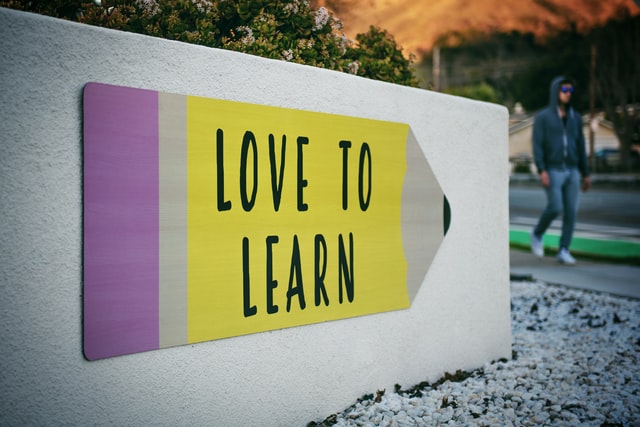
Hello World!
I have agreed to take on the challenge of blogging about accessibility for 31 days in a row.
I’ve decided to make this more than a personal challenge about building a writing habit. I will be writing for the specific audience of educators who are dealing with online education.
The goal is to provide peace of mind by sharing helpful information and motivation, and taking away the mystery of online accessibility. I want to help you be more successful in teaching online by sharing the essential considerations for making your online materials accessible to all of your students.
I will be sharing what I have come to understand as the fundamentals for digital accessibility, and advice on how to define your own workflow to make your materials accessible with as little headache as possible.
From the ground up, we will cover the basic aspects of accessibility theory, to the step by step practices for your authoring tools that result in materials that are usable by all of your students.
The Big Idea
Here is a sampling of some of the topics I will be covering:
- The concepts of digital accessibility, and the ways these concepts translate into specific access strategies for digital media.
- How different digital document types and specific document formats can affect accessibility.
- How to use your authoring tools in a way that creates an accessible experience for your students.
- Different ways to assess the accessibility of your digital content.
- Explanations of the guidelines and standards for digital accessibility, and how your tools help you satisfy accessibility requirements.
- Aspects of learning management systems that affect accessibility.
- Digital Video and Closed Captioning.
- Digital document formats such as PowerPoint, PDF, HTML, and MS Word.
- Assistive Technologies and how they provide access to the content you create.
- Complex and interactive media.
- Forums, Quizzes, and other assessments.
Along the way, I hope to share some insight into why accessibility matters not only for students with disabilities, but how it can also help you work smarter and more efficiently.
31 days is not as long as it seems when you start breaking down all of the different parts of making an online course accessible. You will still have work to do after 31 days of following along, but you will have a manageable plan and a realistic chance of making things accessible.
What to Expect
Each day I will write a short post on a focused accessibility topic, with the intended reading time being about three and a half to five minutes per post.
You can post responses to articles with questions and feedback, and share examples of how you have addressed a problem.
Occasionally I will challenge you to participate in trying out technology and techniques for interacting with your digital content.
At the end of this month, Accessibility will not be a mysterious problem lurking in the shadows and threatening to disrupt your life.
You can gain a basic understanding of what it means for digital media to be accessible for a student with a disability.
You can acquire the basic knowledge and skills required to address the accessibility of your online course materials.
You will find that Accessibility is something you can control.
Technology Concerns
I will be exploring a handful of popular tools, and demonstrating the concepts and functionality for accessibility that are available to you.
I am also aware of how access to technology can be an equity issue in online education. Many teachers and students are doing the best they can with inadequate technology resources or support.
Whenever possible, I will try to demonstrate workflows for the free and inexpensive tools that are available. Accessibility should not be a privilege provided only for the wealthy.
Let’s Dive In!
Here’s your first challenge: can you tell me about your digital workflow?
If you’re not sure what a workflow is, don’t panic. “Workflow” just refers to the process you use to create your lessons and learning materials.
Specifically, you should be able to answer the following questions:
- What software/programs do you use to create the materials you give to your students?
- What Learning Management System (LMS) do you use?
- Where do you obtain the content you use in your class? Do you create it all yourself?
- How many different files are your students downloading or accessing through the web each week?
- Do you use a primary type of file format to communicate with your students or do you use many different types of digital files, such as PDF, HTML, MS Word, PowerPoint, etc.?
- Do you use video repositories such as YouTube or Vimeo?
- Do you use social media in your course?
- Do you use any content packs from your textbook publisher?
- What is your most anticipated concern related to accessibility?
If you’re brave enough, please share your answers in the comments, and I can try to address your specific tools and situations.
Did you know?

Accessibility is often referred to as “a11y”. This is what is known as a “numeronym”, a word that uses the number of letters between the first and last letter to represent long words. In the word “accessibility” there are eleven letters between the a and the y. The fine folks at the A11Y Project provide a great overview of the a11y numeronym at: https://www.a11yproject.com/posts/2017-08-26-a11y-and-other-numeronyms/.
If you go to Twitter and search for the hashtag #a11y, you can find a wide range of posts about accessibility.
Finally, I’m always grateful whenever somebody goes out of their way to learn about accessibility. Thank you for reading all the way to the bottom, and I hope you decide to follow along this month and share your experiences.
